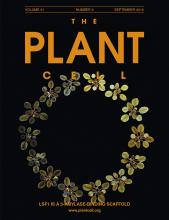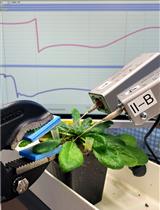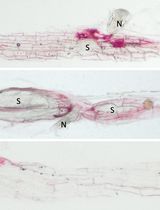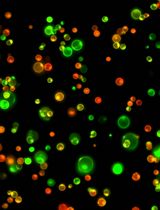- EN - English
- CN - 中文
Insect Feeding Assays with Spodoptera exigua on Arabidopsis thaliana
甜菜夜蛾对拟南芥的取食试验
(*contributed equally to this work) 发布: 2020年03月05日第10卷第5期 DOI: 10.21769/BioProtoc.3538 浏览次数: 5228
评审: Zhibing LaiDemosthenis ChronisAnonymous reviewer(s)
Abstract
Plant-insect interaction is an important field for studying plant immunity. The beet armyworm, Spodoptera exigua, is one of the best-known agricultural pest insects and is usually used to study plant interactions with chewing insects. Here, we describe a protocol for insect feeding assays with Spodoptera exigua lavae using model host plant Arabidopsis thaliana, which is simple and easy to conduct, and can be used to evaluate the effect of host genes on insect growth and thus to study plant resistance to chewing insects.
Background
Plants face a variety of biotic stresses throughout their lives, such as herbivore attack and pathogen infection. The beet armyworm, Spodoptera exigua, is a worldwide phytophagous pest with a broad host range, damaging various vegetable crops and causing considerable economic agricultural losses (Howe and Jander, 2008; Hu et al., 2013). Spodoptera exigua larvae usually feed on both foliage and fruit, and are extremely destructive. Arabidopsis thaliana is a host plant of Spodoptera exigua, and is also a classic model plant to study plant resistance to herbivores. Here, we describe a method adapted from our previous work (You et al., 2019) to conduct the feeding assays with Spodoptera exigua larvae on Arabidopsis thaliana rosette leaves. By counting the weight of the larvae after feeding leaves from different genotypes, we were able to evaluate plant resistance to herbivore attacks in the laboratory settings.
Materials and Reagents
- Square Petri dishes (100 mm × 100 mm, Beijing Ruiaizhengte Biological Technology Co., Ltd., catalog number: YC-HC99050 )
- Petri dishes (150 mm, Corning, catalog number: 430599 )
- 1.5 ml microtubes (AXYGEN, catalog number: MCT-150-C )
- Pipet tips (AXYGEN, catalog number: T-200-Y and T-1000-B )
- Micropore tape (3M, MicroporeTM, catalog number: 1530C-0 )
- Parafilm ( Bemis, catalog number: PM-996 )
- Toothpick (Suncha, catalog number: YQ1250 )
- Black cloth (Beiyang, catalog number: 13000133 )
- Arabidopsis thaliana
- Spodoptera exigua (KEYUN) (https://item.taobao.com/item.htm?spm=a1z09.2.0.0.10672e8dnlXuwi&id=567208183626&_u=pmk8luh1123)
- Artificial diet (Ingredients: wheat germ, yeast, carrageenan, konjac powder, sorbic acid, vitamin C, corn oil, and linoleic acid; KEYUN)
(https://item.taobao.com/item.htm?spm=a1z09.2.0.0.10672e8dnlXuwi&id=43498077050&_u=pmk8luh74e5) - Murashige & Skoog basal medium with vitamins (Phyto Technology Laboratories, catalog number: M519 )
- Bacto-agar (BD, BactoTM, catalog number: 214010 )
- 10% Bleach (KAO, 600 ml)
- 1 M KOH solution (Aladdin, catalog number: P112281 )
- Sucrose (Sinopharm Chemical Reagent Co., Ltd., catalog number: 10021418 )
- Diethyl ether (Sinopharm Chemical Reagent Co., Ltd., catalog number: 10009328 )
- Sterile distilled water
- Nutritional soil (moss peat:vermiculite = 2:1, PINDSTRUP, type: 0-10 mm)
- ½ MS medium (see Recipes)
- 0.8% agar medium (see Recipes)
Equipment
- Pipettes (Gilson, Pipetman® G)
- Graduated cylinder
- Reagent bottle
- Refrigerator or a cold room
- Tweezers
- Plant growth chamber
- Square pot
- Autoclave
- Laminar flow hood
- Balance
- Canon camera
- Ruler
Software
- Microsoft Excel
Procedure
文章信息
版权信息
© 2020 The Authors; exclusive licensee Bio-protocol LLC.
如何引用
You, Y., An, C. and Li, C. (2020). Insect Feeding Assays with Spodoptera exigua on Arabidopsis thaliana. Bio-protocol 10(5): e3538. DOI: 10.21769/BioProtoc.3538.
分类
植物科学 > 植物免疫 > 植物-昆虫互作
细胞生物学 > 细胞信号传导 > 胁迫反应
植物科学 > 植物生理学 > 生物胁迫
您对这篇实验方法有问题吗?
在此处发布您的问题,我们将邀请本文作者来回答。同时,我们会将您的问题发布到Bio-protocol Exchange,以便寻求社区成员的帮助。
Share
Bluesky
X
Copy link














